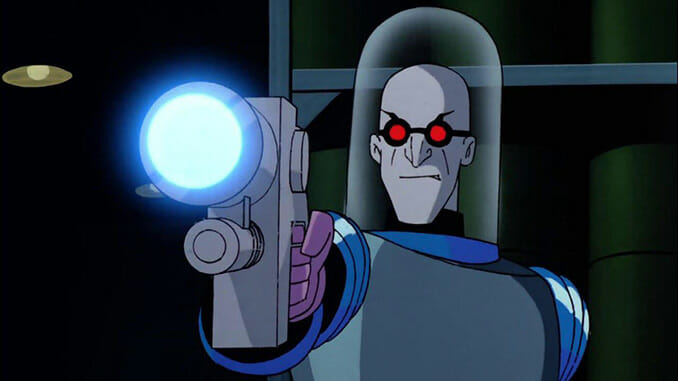Return to Gotham – Batman: The Animated Series‘ Most Tragic Villains had a Heart of Ice and Feet of Clay
Photos Courtesy of Warner Bros. Animation
Editor’s Note: This year, the iconic Batman: The Animated Series turns 30 years old. “Return to Gotham” is a new monthly column looking back at the cartoon that remains a touchstone of the superhero genre and one of the most iconic portrayals of The Dark Knight.
![]()
A superhero is measured by his supervillains, and Batman has the best supervillains in a walk, whether you judge them by their complexity, their distinct visual design, or the ways in which they serve as foils for Batman himself. One of the strengths of Batman: The Animated Series is that the creators clearly understood this, and took the approach of centering the villains in a lot of episodes—not just in terms of the plot, but often in terms of the perspective. As a result, B:TAS is unbelievably dark for a children’s cartoon, and regularly features plots that are predicated on grown men descending into madness. There was nothing like it before and there’s been very little like it since.
It should be mentioned, though, that there’s a clear divide between the villains on B:TAS. To provide something nobody asked for, I present a humble hypothesis that might highlight and classify this dichotomy: You can split Batman’s villains between “social” and “anti-social” ones, and it’s the difference between the baddies who might, say, gather for a poker game where they talk some shit vs. the traumatized loners who exist totally apart from all humanity. (The Joker, for all his claim to being Batman’s archnemesis, still falls into the former category, while the ones I discuss here absolutely do not.)
It is that latter category that B:TAS put the most effort and craft into, and seems to be the one that most interested them: The villain of the first episode, who only shows up once more during the run of the show, absolutely falls into this more exclusive category, which contains some of the show’s best episodes.
“Heart of Ice” introduces Mr. Freeze into the show, but I didn’t realize until recently that it was the first story featuring the character to establish this particular origin story, which has gone on to completely reshape the villain within DC canon: The live-action movie Batman & Robin actually borrows this same premise for the character just a handful of years later; it’s appeared in the Arkham series of Batman games (which were also partly written by members of the show’s creative leads); it also figures into the Harley Quinn cartoon.
The story Batman finds himself drawn into a series of heists of high-tech industrial machinery from a company run by a sleazy CEO (Mark Hamill, putting in some extra time in the booth between Joker appearances no doubt). Mr. Freeze (Michael Ansara)—a dude with robo-armor, a freaking ice gun, and an apparent lack of concern over his henchmen’s Glassdoor reviews—appears to be stealing components for a super-size version of his freeze ray. So far, so Saturday morning cartoon. It’s only when Batman delves deeper into the truth behind Freeze’s origin that he uncovers the real villainy at play in the episode. In security camera footage snatched from the company’s archives, Batman discovers that Mr. Freeze was misusing company cryo tubes to try to save his terminal wife, only for the experiment to be interrupted by Hamill’s CEO, resulting in Freeze’s gruesome disfigurement.
I want to be clear that this reveal includes Mr. Freeze wailing his dying wife’s name as his liquid-nitrogen soaked hand pathetically grasps at the glass of her disrupted cryo chamber. This is a children’s show.
Then there is Clayface (Ron Perlman, in one of the show’s innumerable casting coups). The shapeshifting villain got an epic and deeply, physically unsettling two-parter of an origin story before showing up only sparingly in subsequent episodes. Perlman’s Matt Hagen is an actor with a facial disfigurement, and in order to secure more work, he uses an unsafe product created by recurring gangster capitalist Roland Daggett (Ed Asner, whose voiceover work was just one incredible part of his incredible career). Daggett’s goop lets Hagen completely sculpt his face into its old handsome leading man form… or whatever else Hagen desires, including that of Bruce Wayne, whom Hagen impersonates in order to steal Wayne Enterprises secrets and pin the crime on Bruce.
-

-

-

-

-

-

-

-

-

-

-

-

-

-

-

-

-

-

-

-

-

-

-

-

-

-

-

-

-

-

-

-

-

-

-

-

-

-

-

-








































